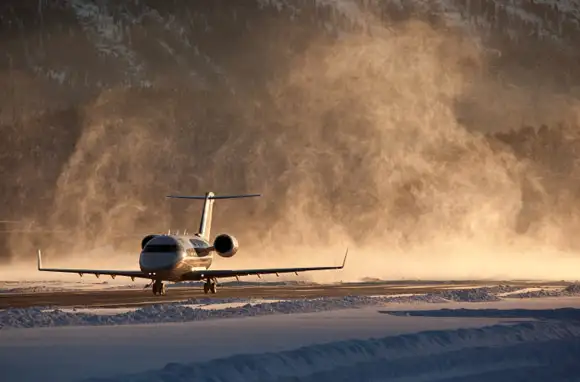
When lightning strikes, blizzards blow, and fist-size hail balls rain from the skies, there are certain gateways where flyers should proceed with caution. Many U.S. hubs are vulnerable to excessive delays and cancellations—and sometimes even shutdowns—when wild weather rages. According to Keith Gerr of FlightStats, “What usually happens is that you get a snowball effect, whereby if one of these airports is seeing significant delays due to a weather event, chances are it will impact the delay level of the rest of the major hubs.” It’s a perfect storm of inconvenience for everyday flyers.
We used weather-caused flight-delay data gathered from the Bureau of Transportation Statistics (BTS) in combination with local weather history and other sources to find which airports fold under foul weather. See the hubs that made our list of stormy, snowy, delay-prone gateways. (Please note: These slides are in no particular order.)
Like this story? Join the 1 million other travelers who read our free Deal Alert newsletter. It’s full of our best tips, trip ideas, and travel deals. Subscribe here today!
Image Gallery
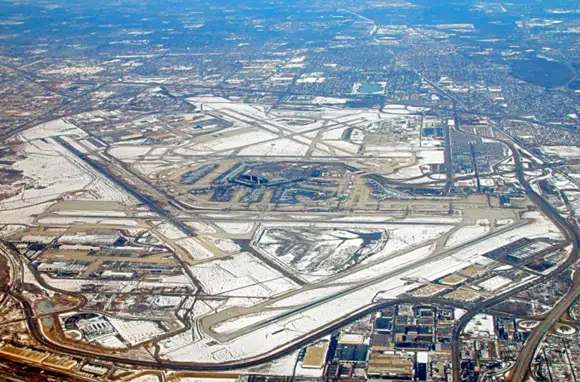
Chicago O'Hare International Airport
The Windy City is well-known for its blustery climate. Likewise, Chicago's major airport, O'Hare International, is notorious for its windy weather—which causes lots of delays. Here are the stats: Sixty percent of delayed flights at O'Hare were caused by weather, reports the BTS. The culprits? High winds, as well as ice, snow, and other cold-weather woes. Most winters, Chicago sees a considerable amount of snow—National Weather Service statistics cite Chicago's average annual snowfall as 38 inches. Combine these conditions with a whole lot of people (O'Hare is one of the busiest airports in the world) and you've got a recipe for a profusion of late flights and inconvenienced flyers.

Chicago O'Hare International Airport
The Windy City is well-known for its blustery climate. Likewise, Chicago's major airport, O'Hare International, is notorious for its windy weather—which causes lots of delays. Here are the stats: Sixty percent of delayed flights at O'Hare were caused by weather, reports the BTS. The culprits? High winds, as well as ice, snow, and other cold-weather woes. Most winters, Chicago sees a considerable amount of snow—National Weather Service statistics cite Chicago's average annual snowfall as 38 inches. Combine these conditions with a whole lot of people (O'Hare is one of the busiest airports in the world) and you've got a recipe for a profusion of late flights and inconvenienced flyers.
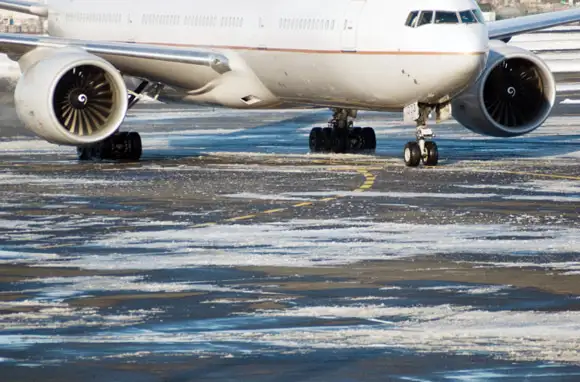
New York-Area Airports: John F. Kennedy International, LaGuardia, and Newark Liberty International
New Yorkers always seem in a hurry to get somewhere. But New York flights? Not so much. In December 2010 a record snowstorm swept the East Coast and caused more than 4,000 canceled flights at New York-area airports, leaving thousands of travelers stranded around Christmas. A year prior, New York City was ranked the worst U.S. metro area for flight delays in a study conducted by the Brookings Institution. The Big Apple's three major airports—John F. Kennedy, LaGuardia, and Newark—all fall near the top of the list when it comes to weather-caused flight delays, according to statistics from the BTS. Volume, naturally, is a big factor, as more than 100 million flyers pass through these airports each year. Throw in a nor'easter or two when thousands of travelers from a condensed area are hitting the skies, and copious delays are bound to happen.
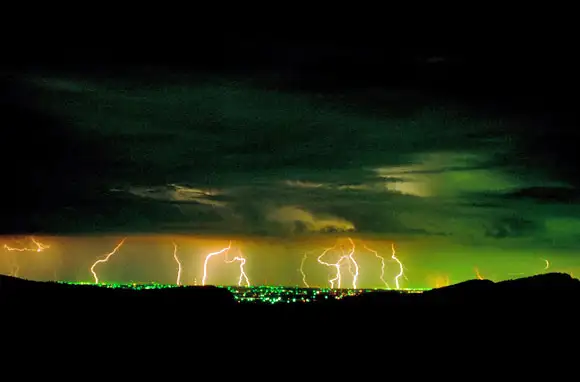
Denver International Airport
Denver's blustery winter blizzards make for some choice skiing on area slopes. But for flyers, Rocky Mountain snowfalls are less advantageous, to put it mildly. Wintertime storms and freezing temperatures often disrupt Denver flights—and to make matters more inconvenient, the white stuff isn't the only cause of weather-delayed flights at DEN. Tornadoes have been known to touch down near the airport, and thunderstorms are a common event. (Here's an electrifying bit of trivia: Lightning is the deadliest local weather hazard.) Altogether, Denver's wild western weather upsets many a flight schedule: About 41 percent of flights departing from the city are delayed due to weather.
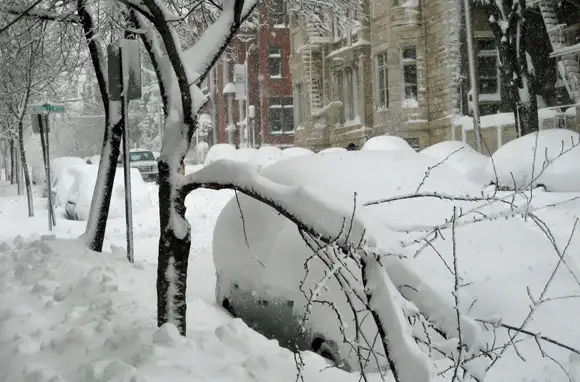
Baltimore/Washington International Thurgood Marshall Airport
According to iFly, weather is the most common cause of delays at Baltimore/Washington International Thurgood Marshall Airport—and BTS statistics back this up. About 38 percent of delayed flights in Baltimore are caused by the elements. A slushy mixture of weather problems, from freezing temperatures and snowstorms to summer thunderstorms, hits this East Coast city year-round. Recently, the airport was shut down by record-setting snow one year (in February 2010, a blizzard blanketed the Baltimore area with three feet of snow) and hit with a hurricane the next (delays and cancellations were rampant when Hurricane Irene swept through in 2011). Of course, the other D.C.-area hubs—Dulles International Airport and Reagan National Airport—are subject to similar weather conditions. But of the three, Baltimore has the worst record when it comes to weather-induced delays.
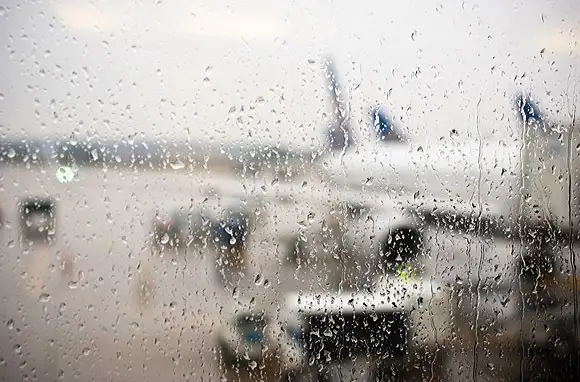
Houston George Bush Intercontinental Airport
When it comes to space travel, Houston knows its stuff. But on-time commercial flights in Texas' largest city are another story. Heavy rains in the region have been known to bring about flight disruptions year after year. Most recently, in early January of this year, a serious storm took out electricity in the Houston area and caused widespread delays at George Bush Intercontinental Airport. This kind of storm, complete with five inches of rain, a tornado, and Ping-Pong-ball-sized hail, is certainly not unheard of on the Gulf Coast. So it's no surprise that 39 percent of delayed flights in Houston are caused by rough weather.
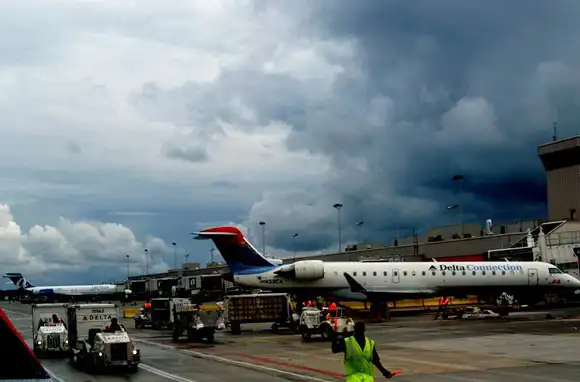
Hartsfield-Jackson Atlanta International Airport
Atlanta is the most congested airport on the planet, says the Airports Council International. And with millions of passengers passing through the hub annually, even the occasional bad storm is bound to cause delays. About 37 percent of delayed flights out of Atlanta are weather-caused, reports the BTS. The culprits, in this case, are mostly thunderstorms. According to NASA, due to Atlanta's local temperature being five to eight degrees higher than surrounding areas, "excess heat produces increased rainfall and thunderstorms." That "Hotlanta" moniker, it turns out, is quite fitting.
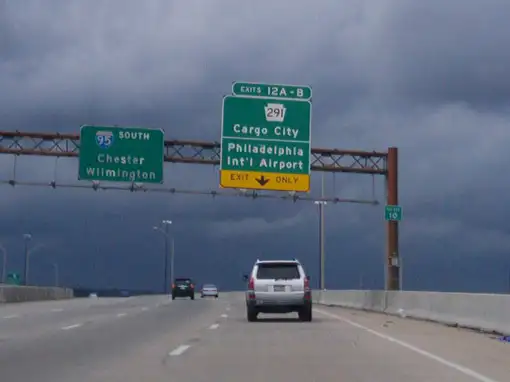
Philadelphia International Airport
Philadelphia's less-than-stellar on-time flight record has an effect on fellow East Coast hubs that isn't, well, very brotherly. According to a report from the Center for Air Transportation
Systems Research, "Philadelphia plays a major role in delays up and down the coast, thanks to poor airport design, bad weather, heavy traffic, and close proximity to New York." The city is set in a region often hit with nor'easters in winter and tropical weather systems crawling up the East Coast in summer and fall. Even worse, the airport is not well-equipped to handle bad weather. Philly's runways are poorly configured to allow multiple takeoffs when storms arrive, so weather-caused delays and cancellations are inevitable.
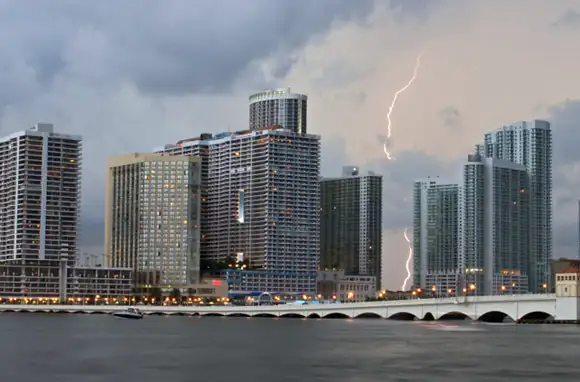
Miami International Airport
Miami locals don't have to withstand extreme temperatures, nor'easters, or blinding snow. Nevertheless, summer storms and hurricanes often wreak havoc on the travel itineraries of jet-setting Miamians. When squalls roll in, it's simply safer for planes to stay grounded, as stormy conditions can create treacherous conditions for flights. BTS statistics show that roughly 35 percent of delayed flights departing from MIA are grounded due to weather. Raging thunderstorms cause dangerous fluctuations in wind speed, as well as violent updrafts and downdrafts (sharp wind currents) that can produce severe turbulence. The worst time of year for Miami fliers is hurricane season, which runs from late-spring through fall.
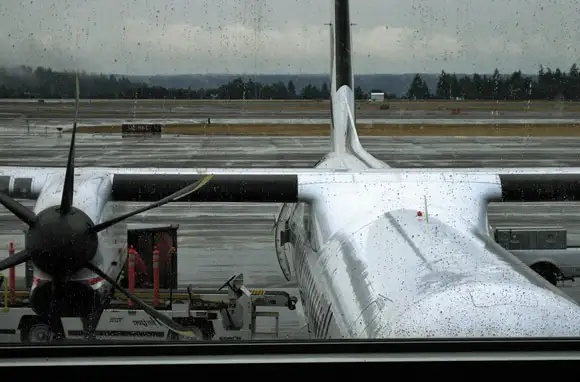
Seattle-Tacoma International Airport
Here's an easy fix for an airport bogged down with weather-caused delays: add more runways. In 2008 new landing strips were opened at Seattle-Tacoma International in an effort to improve on-time flight performance. The project cost more than $1 billion dollars and was projected to reduce delays by half. How'd it turn out? About 27 percent of flights were delayed in 2007, before the new runways were put in. In 2009—after the billion-dollar project was completed—Seattle saw flight delays decrease to about 23 percent. An improvement? Sure. But not enough to keep Sea-Tac off our list. Proportionately, a significant amount of delays at the Seattle hub are still rooted in bad weather. Roughly 32 percent of delayed flights in Seattle, which is one of the rainiest and snowiest cities in the U.S., are caused by weather conditions.

San Francisco International Airport
San Francisco, also known as Fog City, is famous for—what else—the cool smoky mists that shroud the place on balmy days. The flight-canceling San Fran fog even had a starring role on the big screen in the film Four Christmases. In the movie a couple attempts to flee San Francisco during the holidays but becomes stranded in the city when all outbound flights are grounded due to fog. Unlike the plot of many a holiday Hollywood film, this story line is based in reality. Fog-delayed flights are a serious problem at San Francisco International Airport. According to statistics from the BTS, 72 percent of delayed flights at SFO are caused by weather. Why all the delays? The Cranky Flier, just one of many irked travelers that have passed through SFO, explains: "It's too foggy at the airport by the Bay, and the runways are too close together to operate at full capacity in the fog. In a city that loves the environment more than just about anything, this isnât likely to get fixed any time soon."
Have you ever been stranded at the airport due to bad weather? Leave a message below!
More From Smartertravel:
We hand-pick everything we recommend and select items through testing and reviews. Some products are sent to us free of charge with no incentive to offer a favorable review. We offer our unbiased opinions and do not accept compensation to review products. All items are in stock and prices are accurate at the time of publication. If you buy something through our links, we may earn a commission.
Related
Top Fares From Columbus, OH
Today's Top Travel Deals
Brought to you by ShermansTravel
Shop and Save with Country Inns...
Patricia Magaña
 Hotel & Lodging Deals
Hotel & Lodging Deals
$229 -- Chicago: Discounted Rates and...
Francesca Miele
 Hotel & Lodging Deals
$229+
Hotel & Lodging Deals
$229+
$188 -- Honolulu: Save on Oceanview...
Abigail Lamay
 Hotel & Lodging Deals
$188+
Hotel & Lodging Deals
$188+



